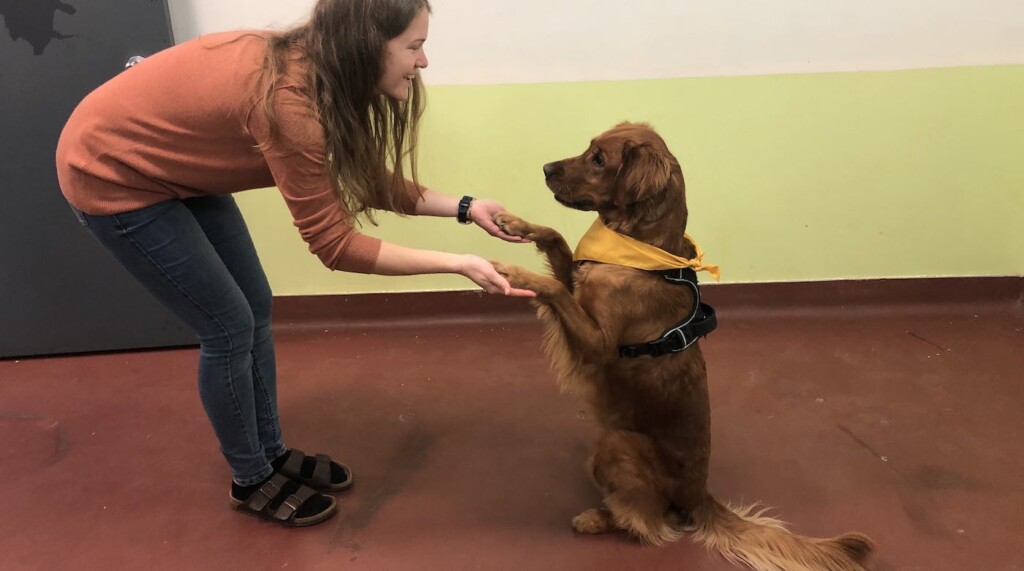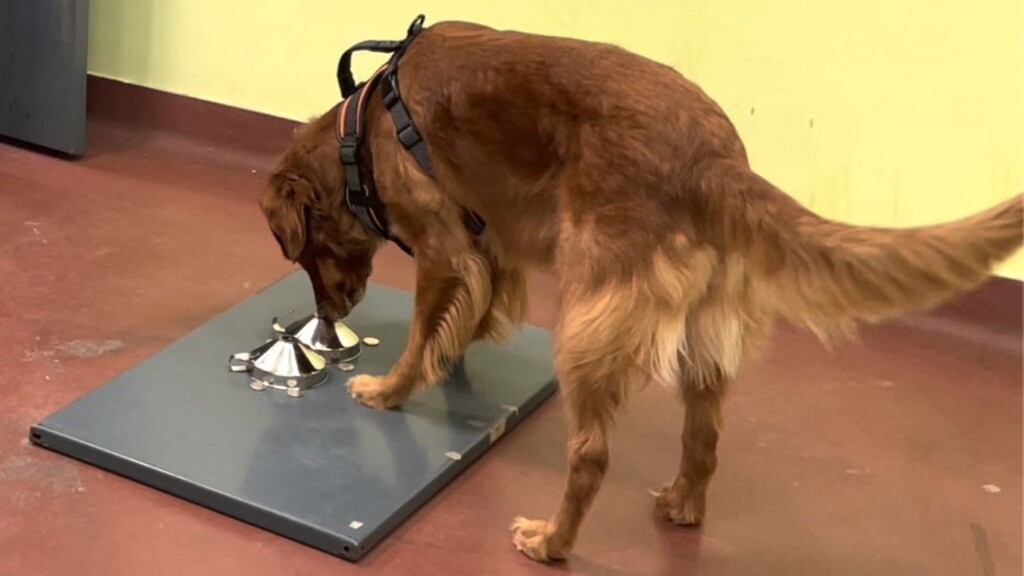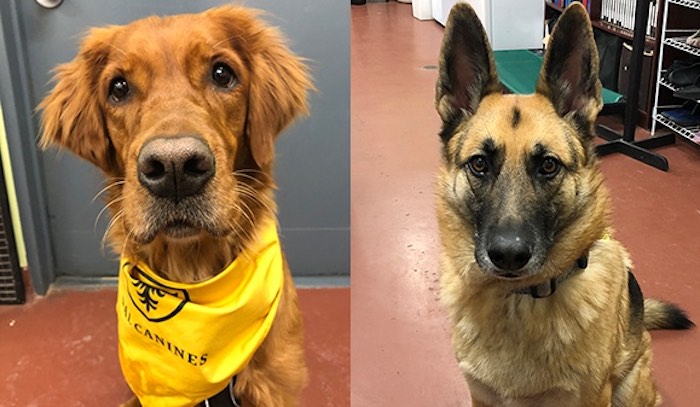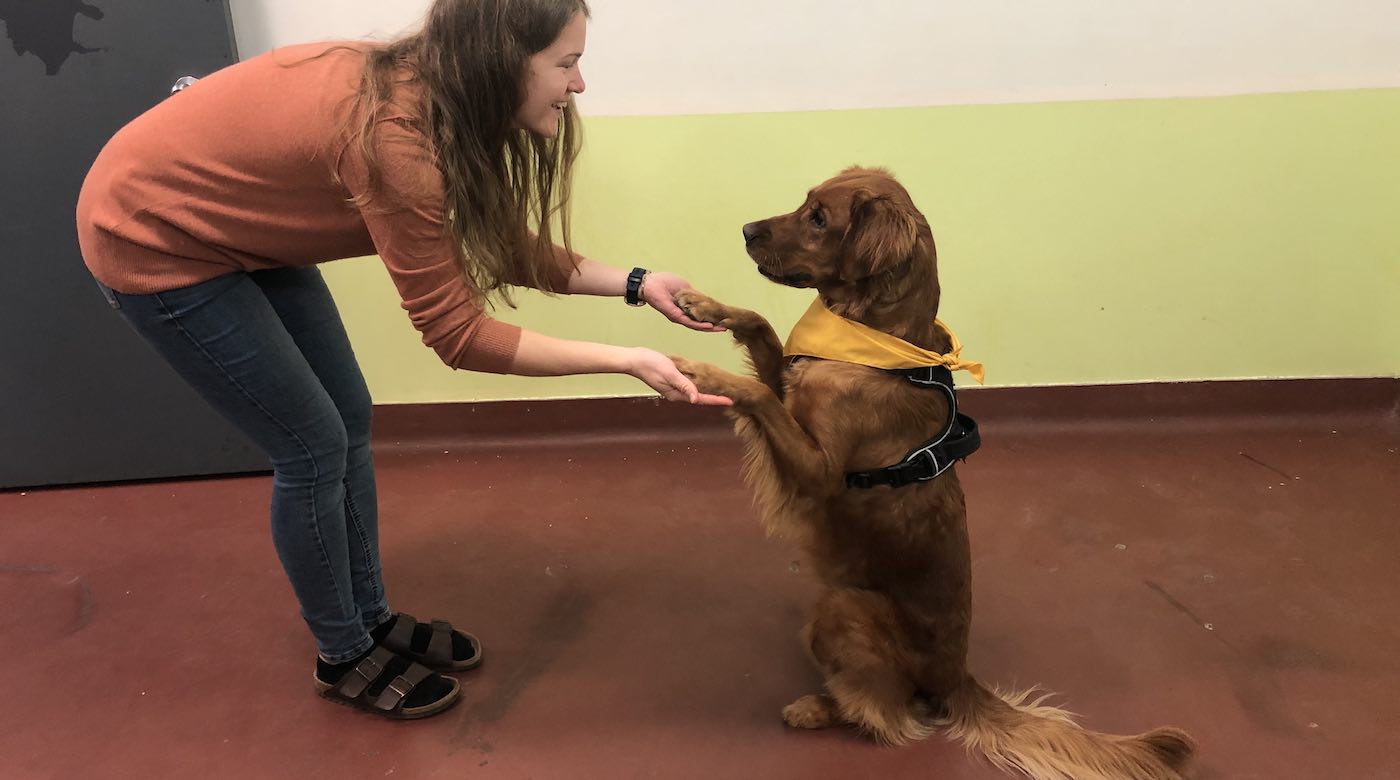
Two dogs have been trained to sniff out post-traumatic stress by smelling survivors’ breath—with an accuracy success rate following initial training of 90 percent.
Scientists say the breakthrough will make post-traumatic stress disorder support dogs more effective.
PTSD is a mental health condition that’s triggered by a terrifying event such as a car crash or terror attack, with symptoms that include flashbacks, nightmares, and severe anxiety, as well as uncontrollable thoughts about the event.
Dogs’ sensitive noses already can detect the early warning signs of medical situations, such as an impending seizure. Now, researchers have evidence that assistance dogs might be able to sniff out an oncoming PTSD flashback, before it happens.
In the pilot study, the team taught two dogs to decipher the breath of people who have been reminded of traumas, by recognizing the scent of trauma reactions on human breath.
A Golden Retriever named Ivy and a German Shepherd-Belgian Malinois mix named Callie, were the only two of 25 dogs “skilled and motivated enough” to complete the rigorous training process.
Study first author Laura Kiiroja, of Dalhousie University, Canada, said: “Dogs are currently trained to respond to behavioral and physical cues. Our study showed that some dogs can also detect these episodes via breath.”
She said assistance dogs currently help patients by alerting to and interrupting episodes when their companions are struggling with their symptoms. Responding to stress markers on their breath, these four-legged medics can potentially interrupt episodes at an earlier stage, making their interventions more effective.
All humans have a ‘scent profile’ of volatile organic compounds (VOCs)—molecules emitted by the body in secretions such as sweat—influenced by our genetics, age, activities, and other variables.
There was some evidence that dogs may be capable of detecting VOCs linked to human stress, but until now, no studies have investigated whether dogs could learn to detect VOCs associated with PTSD symptoms.

Dr. Sherry Stewart’s clinical psychology lab at Dalhousie University collaborated with Dr Simon Gadbois’ canine olfaction lab, bringing together two distinct sets of expertise.
The scientists recruited 26 people as scent donors who were also taking part in a study about the reactions of people with trauma when reminded of that trauma; over half of the patients met the diagnostic requirements for PTSD.
To donate scents, the participants attended sessions where they were reminded of their trauma experiences while wearing different face masks. One face mask provided a calm breath sample that acted as the control, while another, which was worn as the participants recalled their traumatic experience, provided a target breath sample.
The participants also completed a questionnaire about their stress levels and their emotions.
Ms. Kiiroja, currently working on her PhD in biomedical scent-detection dogs, said: “Both Ivy and Callie found this work inherently motivating.
“Their limitless appetite for delicious treats was also an asset. In fact, it was much harder to convince them to take a break than to commence work.
“Callie in particular made sure there was no dilly-dallying.”
THE DOG HELPED MY HOMEWORK: Dogs Placed in Elementary Schools Making a Big Difference in Academics and Mental Health for Michigan Students

They achieved 90 percent accuracy in discriminating between a stressed and a non-stressed sample from pieces of the face masks, according to the study published by the journal Frontiers in Allergy.
The dogs were then presented with a series of samples, one at a time, to see if they could still accurately detect the stress VOCs. In the second experiment, Ivy achieved 74 percent accuracy while Callie achieved 81 percent.
Comparing Callie and Ivy’s successful identifications with the human participants’ self-reported emotions revealed that Ivy’s performance correlated with anxiety, whereas Callie’s correlated with shame.
HERO JACK RUSSELL: Tiny Bomb-Sniffing Jack Russell is a National Hero, Sporting a Presidential Medal
“Although both dogs performed at very high accuracy, they seemed to have a slightly different idea of what they considered a ‘stressed’ breath sample,” said Kiiroja.
“We speculated that Ivy was attuned to sympathetic-adreno-medullar axis hormones—like adrenaline—and Callie was oriented to the hypothalamo-pituitary-adrenal axis hormones, like cortisol.
“This is important knowledge for training service dogs, as alerting to early-onset PTSD symptoms requires sensitivity to sympathetic-adreno-medullar axis hormones.”
CHECK OUT: Nation’s Largest No-Kill Rescue Shelter Opens in Alabama to Save 5,000 Dogs a Year
Following the proof-of-concept study that included 40 sample sets, the team will attempt to validate the results with larger sample sizes.
“In addition to enrolling more participants, validation studies should collect samples from a higher number of stressful events to confirm dogs’ ability to reliably detect stress VOCs in the breath of one human across different contexts.”
SEND THE SWEET STRESS RELIEF To Friends By Sharing on Social Media…




















